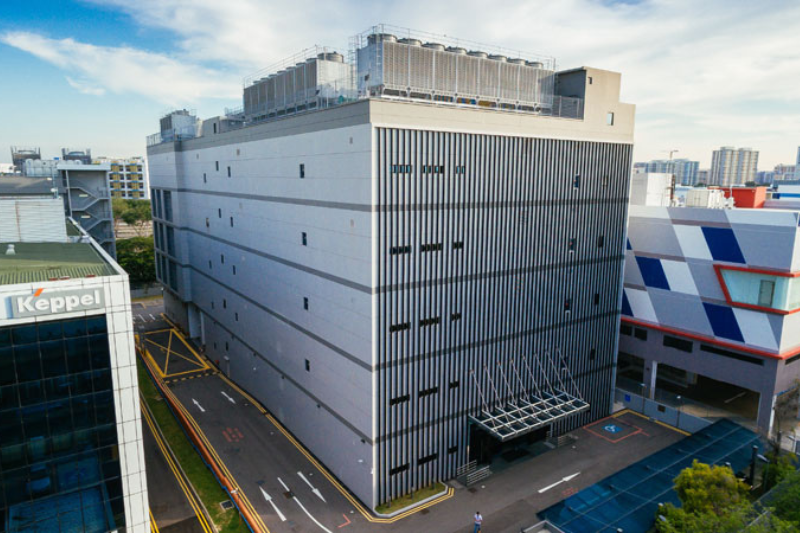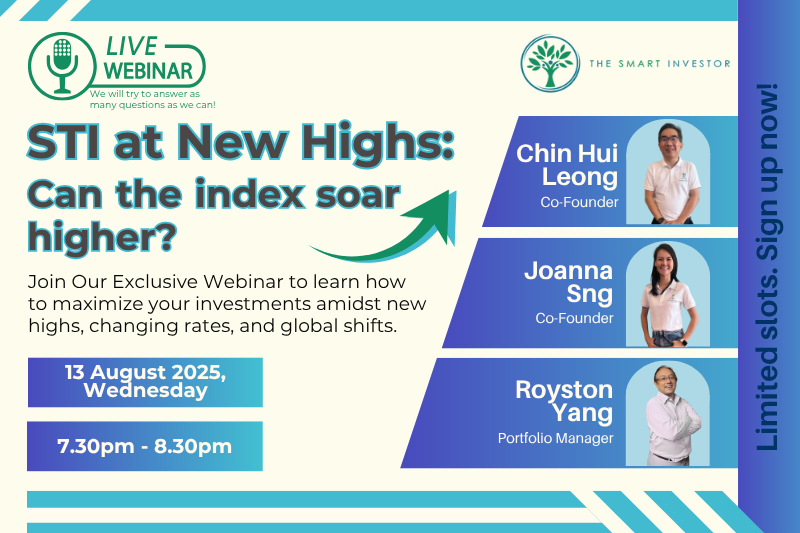Keppel DC REIT (SGX: AJBU) will be reporting its earnings soon.
But the REIT’s previous double-digit increase in distribution per unit (DPU) is catching all the attention.
In a sector where REITs are struggling with higher financing costs, that’s an impressive feat.
Let us examine what this DPU increase means for Keppel DC REIT’s outlook.
Keppel DC REIT’s DPU Increase
For 2025’s first half (1H2025), Keppel DC REIT, or Keppel DC, announced a 12.8% increase in its DPU to S$0.05133 per unit compared to the prior year.
At a unit price of S$2.38, this represents an annualised trailing dividend yield of 4.2%.
This increase in DPU is on the back of strong rental performance with distributable income (DI) surging 57.2% year-on-year (YoY) to S$127.1 million.
Management commented that higher DI and DPU is mainly due to acquisitions, contract renewals and rental escalations.
This DPU raise is a positive surprise amid cautious sentiment toward the REIT sector with several blue-chip names recording a decline in DPU.
Notably, CapitaLand Ascendas REIT (SGX: A17U) reduced its DPU by 0.6% YoY, Frasers Logistics & Commercial Trust (SGX: BUOU) reporting a 13.8% decline in DPU, and Mapletree Industrial Trust (SGX: ME8U) saw its DPU slip 4.7% compared to the prior year.
Comparing Keppel DC against its data centre peer further highlights its outperformance: Digital Core REIT (SGX: DCRU) kept its latest DPU unchanged.
In sum, Keppel DC REIT is bucking the trend of declining distributions across the REIT landscape.
Why This Increase Matters
This DPU increase showcases Keppel DC’s strong operating performance and disciplined financial management.
Occupancy rate is strong at 95.8%, with no major contracts due for renewal for the rest of the year.
The REIT is lowly leveraged, with an aggregate leverage of only 30% as of 30 June 2025. Cost of debt came in at 3%, down 0.1 percentage points compared to the prior year.
Interest coverage ratio came in at a pleasing 5.9 times.
Keppel DC operates in three segments: Singapore, Asia-Pacific (China, Australia, Japan, and Malaysia), and Europe.
Singapore makes up 66.0% of assets under management (AUM) with the rest of Asia-Pacific contributing 15%, and Europe with 19% of AUM.
With a few exceptions, its properties have high occupancies across the region.
Weighted average lease expiry (WALE) by income stands at 4.7 years, underpinning the REIT’s distributable income for the next few years.
Keppel DC’s recent results further strengthens investors’ confidence in the REIT’s ability to navigate a high-rate environment.
How Keppel DC REIT Achieved This
Keppel DC’s solid performance was due to its active lease management and focus on high-quality hyperscale and enterprise tenants.
The REIT reported a recent major renewal in 2Q2025 which saw a positive reversion of more than 50%.
Recently, it announced an acquisition of its second data centre in Japan and the completion of its purchase in the remaining interest in Keppel DC Singapore 7 & 8 in August.
Keppel DC saw the lease termination for its Cardiff data centre (0.5% of AUM) and it expects the divestment of its Basis Bay data centre to be done by the third quarter of 2025 (3Q2025).
While the trust does not disclose average rental escalation, it does mention that more than 50% of its contracts have rental escalations tied to inflation and fixed rate increases, which mitigates inflationary pressures.
The REIT is riding the secular tailwinds of cloud computing, AI, and digitalisation trends, resulting in strong demand for its data centre properties.
Combined with its prudent capital management, Keppel DC is poised to continue its strong performance.
Keppel DC has an upcoming debt maturity wall in the next three years, with over 71% of its total borrowings due by 2028, as of 30 June 2025.
The REIT has 76% of its total borrowings in fixed rate debt, whose refinancing should benefit from the rate-easing cycle.
What Investors Should Watch Next
With interest rates expected to continue trending down, Keppel DC stands to benefit from lower financing costs and improved asset valuations.
This trend could lead to growth in distributions.
An acceleration in demand for data centre capacity due to AI and cloud computing adoption will benefit the REIT.
Some risks to monitor include a reduction or slower technology spending, increased competition, or rising energy costs.
The REIT’s distribution yield of 4.2% is decent but not the highest among its peers.
However, Keppel DC’s pipeline of developments and potential acquisitions suggest possible higher distribution in the future.
What This Means for Investors
A DPU increase signals resilience and strong execution.
Keppel DC REIT’s exposure to structural growth trends in digitalisation and its geographically diversified portfolio strengthen its case as a stable income play.
It offers both yield and potential upside if interest rates decline and data centre demand remains robust.
Get Smart: Data Centre Exposure
Keppel DC REIT’s DPU growth shows that quality assets and prudent management still win in a tough market.
With data centres touted to be a key part in the digital economy, this REIT combines defensive income with long-term growth potential.
Not all industrial REITs are the same – Keppel DC could be a candidate that investors can consider in their portfolio.
Some companies cut dividends in a downturn. These 5 didn’t.
Find out which Singapore blue chips have weathered past chaos…and why they could be your portfolio’s anchors in the next wave of downturn. Download the report free.
Follow us on Facebook, Instagram and Telegram for the latest investing news and analyses!
Disclosure: Wesley owns shares in Keppel DC REIT.






